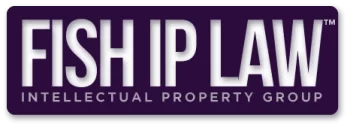The United States and Russia have a one-year disclosure window, allowing a one-year period after initial disclosure before an applicant needs to file a patent application. All other foreign countries have absolute novelty bars, where any disclosure you make prior to filing your application will very likely foreclose all possibility of securing patent rights in those countries.
Disclosure is interpreted liberally. If the Examiner can find publication or use of the claimed subject matter more than a year before the application’s priority filing date in the US, or at any time before that date in almost any other country, then that disclosure precludes patentability. It doesn’t matter whether that disclosure is in the form of a patent application, a journal article, a blog site, or anything else that the public has access to. There can be arguments as to what is publicly available, for example, when a PhD thesis is made available to a limited number of readers in a university department.
NDAs are a good idea, and can be useful in focusing the minds of the recipients on the fact that the inventor considers information regarding his new technology to be confidential. On the other hand, NDAs are very difficult to enforce from a practical standpoint, and in a great many cases are essentially worthless. It is possible to have recipients sign a non-disclosure, non-competition agreement, which can be easier to enforce, but most recipients are loathe to sign such agreements. It is sometimes a better idea to obtain “expectation of confidentiality. In that case the discloser asks a potential recipient if they will agree to keep the disclosure confidential, the recipient says something along the lines of “of course”, and then sends a follow up email confirming the “yes” representation.
Keeping a notebook is a good idea, provided the notebook is bound, with sequentially numbered pages, is signed periodically by a witness who understands the technology, and is kept in a safe place. Indeed, prior to the US adopting the “first to file” practice, a properly signed notebook was one of the best ways to establish constructive reduction to practice.
In 2013 the US joined the rest of the world in adopting a first to file paradigm, so whoever gets to the patent office first gets the patent. This is just like the gold rush from the 1880s. Whoever registered their claim with the local patent office for a section of the mountain or stream got rights to mine gold in that section. At this point in time, keeping a notebook establishing invention is thus mostly used in the patent office to show that an earlier filed stole the inventive ideas from a later filer.
No, that is a terrible way of establishing priority. The best way to draw your line in the sand is to file a patent application. With a filing fee of only about $130, there is no excuse for not at least filing a provisional application.
Disclosures to friends and family are usually not problematic with respect to bar dates because the disclosures are not considered to be public, and they are done under an expectation of confidentiality. On the other hand, the less disclosure the better, at least until a patent application is filed on the invention. It is not at all uncommon for a friend or family member to accidentally either reveal something that was told to them in confidence, or say something that somehow triggers a third person to invent the technology themselves. The best protection, and to some extent the only reliable protection, is to get your patent application on file.
The USPTO publishes patent applications at about 18 months from the filing date of the earliest claimed provisional or other priority application. But note that a provisional could be published earlier if it is claimed as priority in a non-provisional filing, and that non-provisional application issues quickly. For example, if an inventor files a first provisional on January 1, 2024, a second provisional on November 1, 2024, and a non-provisional claiming priority to both provisionals on December 1, 2024, both provisionals and the non-provisional will be available on the USPTO website if the non-provisional publishes in March 2025.
Many foreign governments and the PCT also publish patent applications at about 18 months from the earliest claimed priority date. Thus, where there is a corresponding foreign or international application, the subject matter will be disclosed even if the USPTO fails to publish it.
It is possible to request non-publication when filing a US patent application. That is supposed to keep the USPTO from publishing the application at 18, which can keep the application operating as a submarine until it issues. That strategy doesn’t always work, however, because the USPTO messes up, and publishes that application by accident. Also, requesting non-publication is also a bit dangerous. If the US application is used as priority for a PCT or foreign application while under a non-publication status, the US application will immediately go abandoned. Accordingly, it is important to calendar a reminder at 16 or 17 months to consider filing a withdrawal of the non-publication request.
The USPTO keeps provisional applications confidential, unless they are claimed as priority in a non-provisional application. Once a non-provisional application is filed that claims priority to a provisional, that provisional will become part of the file wrapper of the non-provisional, and will be available on-line when the non-provisional is published. In that case publication would usually occur about 18 months after the filing of the provisional.
